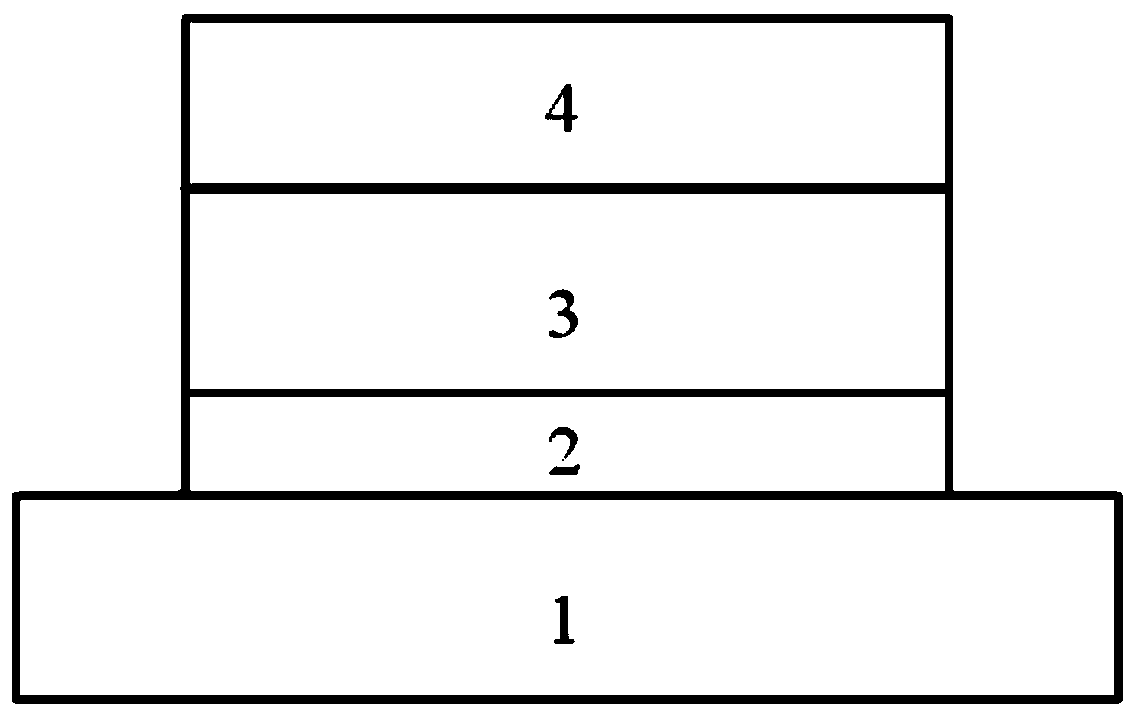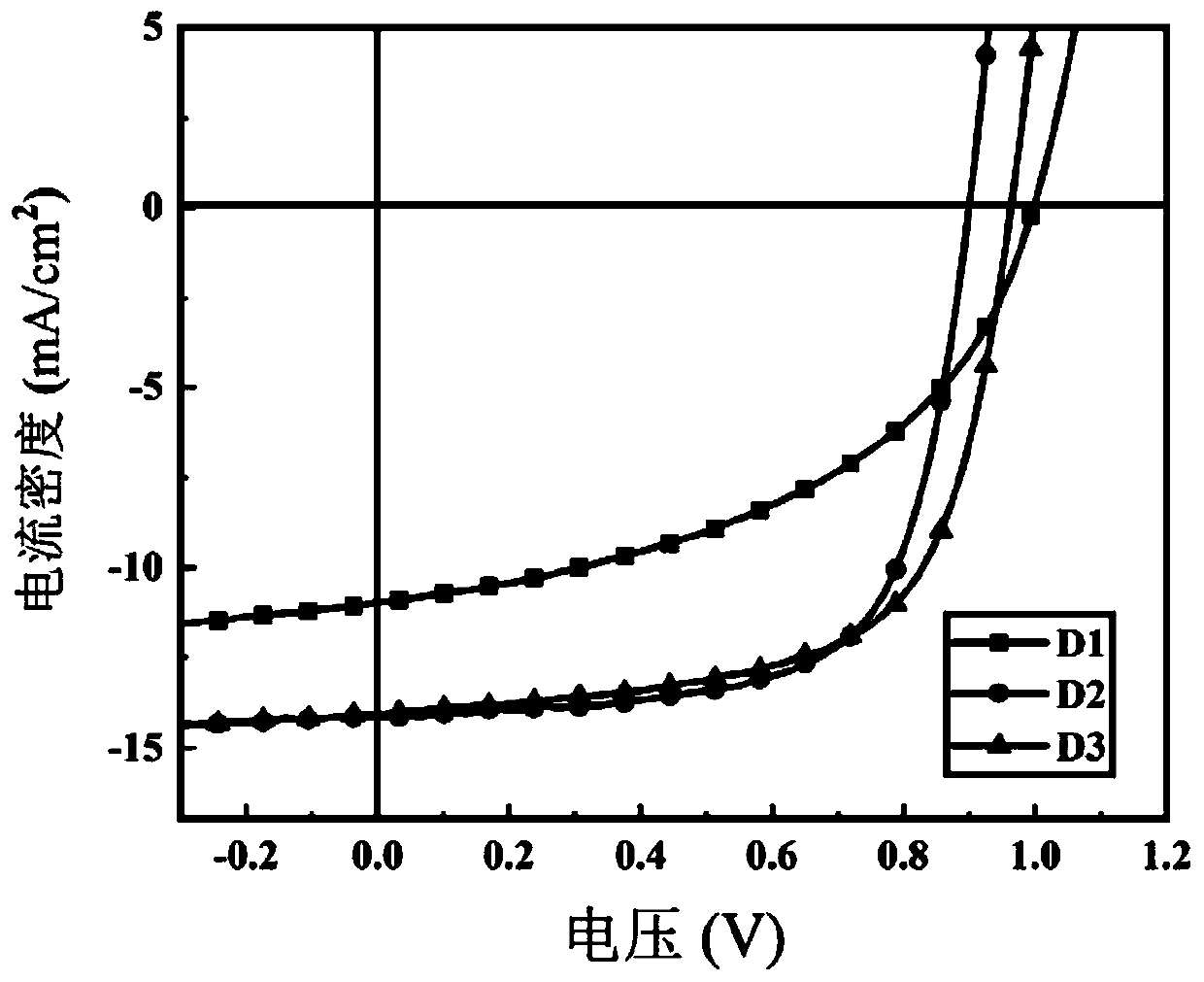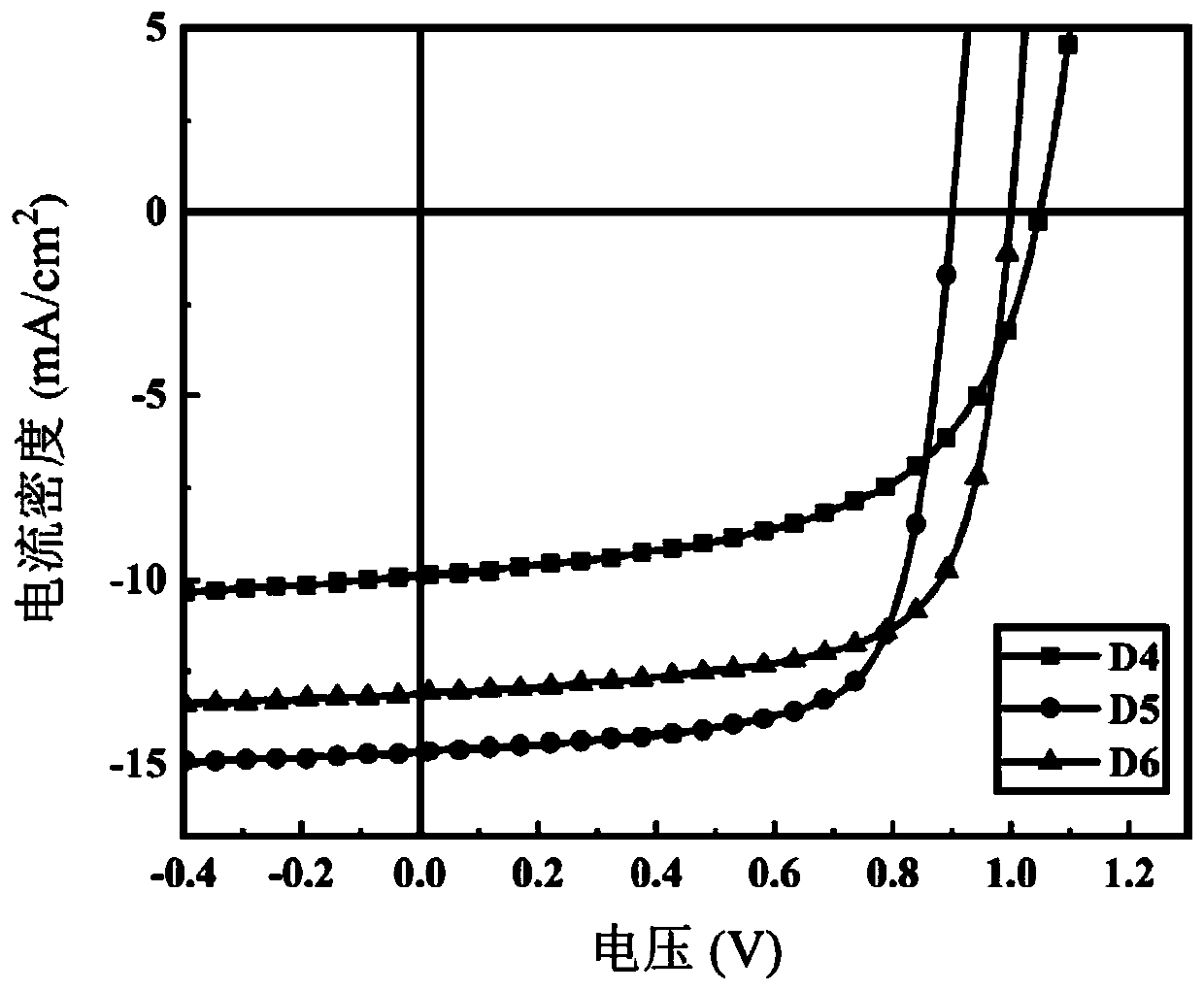Indacenodithiophene-based non-fullerene organic solar energy electron acceptor material
A technology for solar cells and acceptor materials is applied in the field of acceptor materials for organic solar cells based on thiophene non-fullerenes, and achieves the effects of lowering the energy level, reducing the energy gap, and having strong light absorption capability.
- Summary
- Abstract
- Description
- Claims
- Application Information
AI Technical Summary
Problems solved by technology
Method used
Image
Examples
Embodiment 1
[0025] Preparation of non-fullerene organic solar cell acceptor material with the following structural formula
[0026]
[0027] Accurately weigh 0.488g (0.4mmol) of 4,4,9,9-tetrahexadecyl-4,9-dihydro-S-indacene[1,2-b:5,6-b' ] Dithiophene-2,7-dialdehyde, 0.388g (2.0mmol) 3-(dicyanomethylene) indoketone, 0.006g (0.07mmol) β-alanine, put into 250mL two round bottoms In the flask, keep the condition protected from light, and carry out vacuum operation. After vacuuming, blow nitrogen into the flask, repeat the above operation at least 3 times, measure 50mL of 1,2-dichloroethane and 25mL of methanol with a graduated cylinder, inject them into the flask through a syringe, and keep stirring during this process. The temperature of the oil bath was raised to 80°C, the reaction was refluxed for 12 hours, the heating was turned off, and the stirring was continued until the temperature of the reaction system returned to room temperature. Next, the product was extracted with dichlorom...
Embodiment 2
[0029] Preparation of non-fullerene organic solar cell acceptor material with the following structural formula
[0030]
[0031] In this embodiment, the 3-(dicyanomethylene) indoketone used in Example 1 is replaced with 5,6-difluoro-3-(dicyanomethylene) indoketone in the amount of the same substance, The other steps were the same as in Example 1, and the dark blue-black powder acceptor material IDT-IC2F was obtained with a yield of 67.3%, and the structural characterization data were: 1 H NMR (400MHz, CDCl 3 )δ(ppm):8.97(s,2H),8.64-8.47(m,2H),7.72(s,2H),7.71-7.63(m,2H),7.60(s,2H),2.06(t,J =13.6Hz,4H),1.98-1.86(m,4H),1.14(dd,J=24.9,15.7Hz,104H),0.92-0.73(m,20H); MS(ESI)m / z:1645.10[M +H]+.
Embodiment 3
[0033] Preparation of non-fullerene organic solar cell acceptor material with the following structural formula
[0034]
[0035] In this example, the 3-(dicyanomethylene) indoketone used in Example 1 is replaced with thienindanone in the same amount of substances, and the other steps are the same as in Example 1 to obtain dark blue black powder receptor Material IDT-ICTh, the yield is 75.4%, and the structural characterization data are: 1 H NMR (400MHz, CDCl 3 )δ(ppm):8.90(s,2H),8.39(s,2H),7.95(s,2H),7.68(s,2H),7.58(s,2H),2.05(t,J=13.1Hz, 4H), 1.93(t, J=12.4Hz, 4H), 1.11(d, J=17.5Hz, 104H), 0.90-0.73(m, 20H); MS(ESI) m / z: 1585.27[M+H] +.
PUM
 Login to View More
Login to View More Abstract
Description
Claims
Application Information
 Login to View More
Login to View More - R&D
- Intellectual Property
- Life Sciences
- Materials
- Tech Scout
- Unparalleled Data Quality
- Higher Quality Content
- 60% Fewer Hallucinations
Browse by: Latest US Patents, China's latest patents, Technical Efficacy Thesaurus, Application Domain, Technology Topic, Popular Technical Reports.
© 2025 PatSnap. All rights reserved.Legal|Privacy policy|Modern Slavery Act Transparency Statement|Sitemap|About US| Contact US: help@patsnap.com



